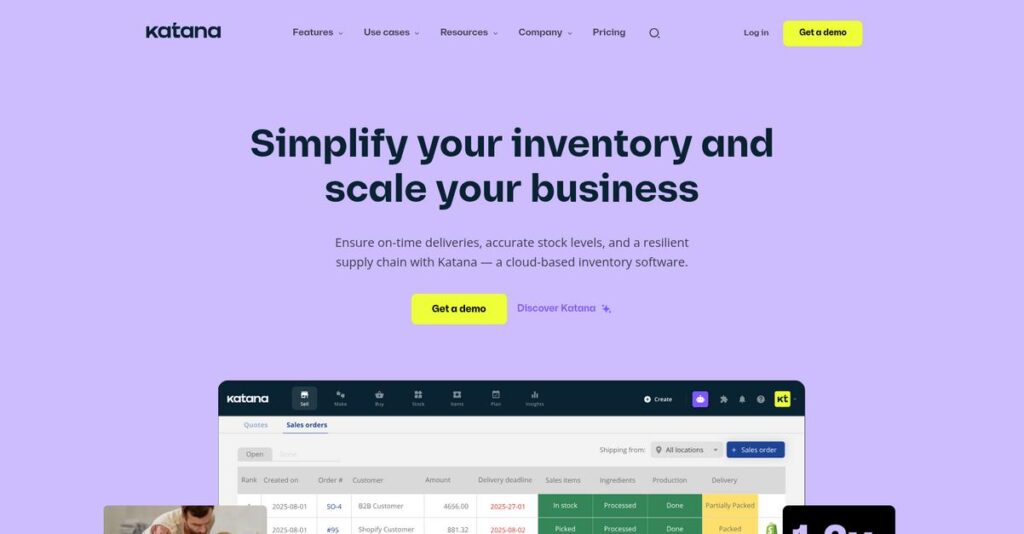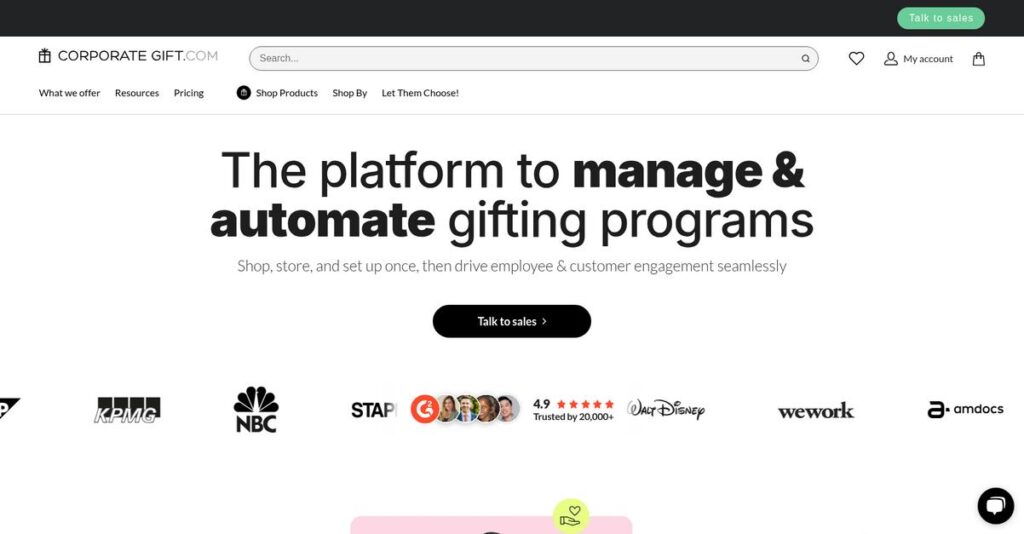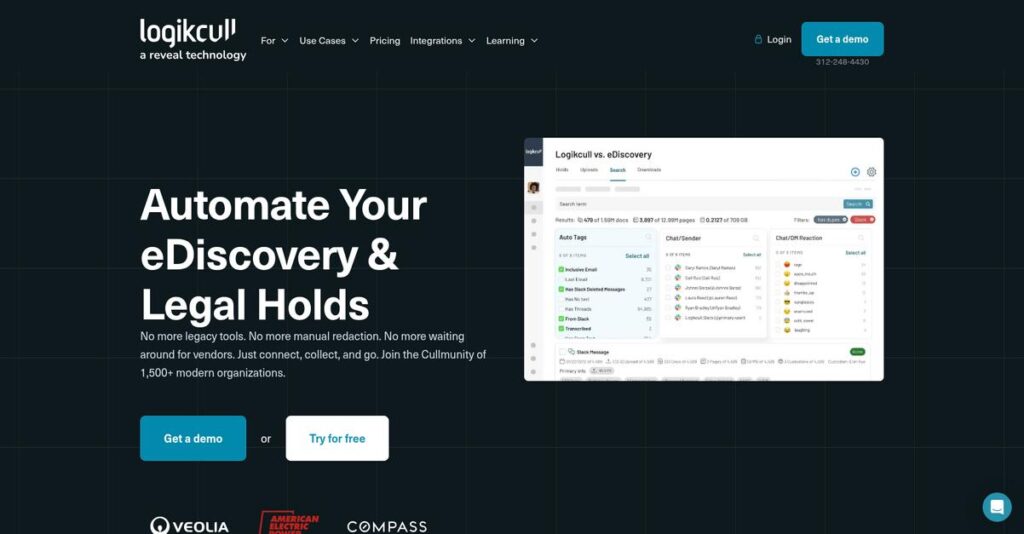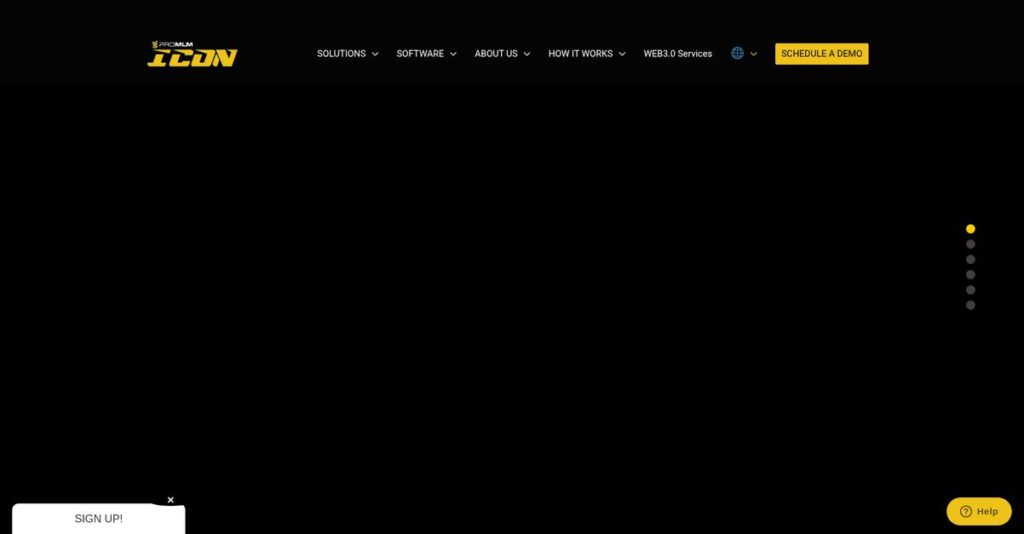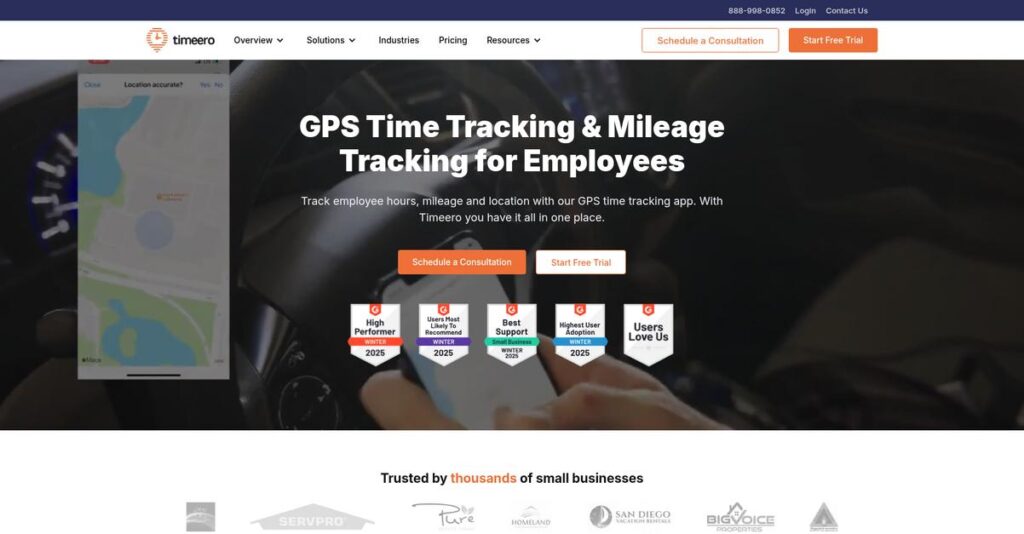Production chaos eating up your day?
If you’re relying on spreadsheets or disconnected tools, it’s easy to miss stockouts, bungle orders, or waste hours juggling schedules—and that’s probably why you’re looking into Katana.
My research shows that mismanaged inventory leads to missed sales and late orders—a headache for any manufacturer focused on growth.
After digging into Katana’s platform and recent updates, I found a solution that stands out: it brings inventory, production, and order management into one live, visual system, with Shopify and WooCommerce integration that actually works for SMBs.
In this Katana review, I’ll walk you through how the platform simplifies manufacturing operations in real life and what you can expect if you make the switch.
You’ll discover Katana’s core features, pricing, and how it compares to alternatives—so you can see if it actually solves your production pain.
You’ll get the features you need to make an informed, low-risk software decision for your company.
Let’s dive in.
Quick Summary
- Katana is a cloud-based manufacturing ERP that simplifies inventory, production, and order management for scaling makers.
- Best for small to medium-sized DTC manufacturers moving beyond spreadsheets to manage production visually.
- You’ll appreciate its intuitive drag-and-drop scheduling and live inventory sync with e-commerce platforms like Shopify.
- Katana offers tiered subscriptions starting at $129/month with a 14-day free trial available for all plans.
Katana Overview
Katana has been around since 2017, based in Tallinn, Estonia. What impressed me during my research is their clear mission: giving modern makers an intuitive, visual manufacturing system.
What really sets them apart is how they target scaling direct-to-consumer brands that are often frustrated by spreadsheets. You won’t find them trying to be a complex, one-size-in-fits-all ERP; they know your business likely uses Shopify.
A key development for this Katana review was their late 2023 acquisition by Flowhaven. This was a very smart move, positioning them for future growth and potential brand licensing integrations.
Unlike competitors like Odoo that can be overwhelming, Katana emphasizes an intuitive, visual production planning experience. My research shows this focus translates to much faster adoption because it was built for actual workshop managers.
They work with thousands of small and medium-sized businesses. You’ll find their solution powering workshops that produce everything from specialty coffee and cosmetics to custom furniture and consumer electronics.
My analysis shows Katana’s entire strategy centers on creating a single source of truth from your online storefront to your shop floor. This directly solves your most critical inventory and production visibility problems.
Now let’s examine their core capabilities.
Katana Features
Overwhelmed by manufacturing chaos?
Katana simplifies manufacturing management by bringing inventory, production, and sales into one intuitive system. Its comprehensive Katana features are designed to give manufacturers real control. Here are the five main features that transform your operations.
Speaking of transforming operations, you might also find my guide on applied behavior analysis software useful for optimizing workflows.
1. Live Inventory and Materials Management
Still losing track of inventory?
Manual tracking often leads to frustrating stockouts or overselling products. This creates disappointed customers and unexpected production delays.
Katana provides a real-time, unified view of all inventory. From my testing, this feature prevents unexpected material shortfalls by automatically calculating availability based on orders. It truly syncs across your sales channels.
You can confidently accept sales orders, knowing you have materials. This reduces production delays, keeping customers happy.
2. Visual Production Planning & Scheduling
Spreadsheets making production chaos?
Relying on spreadsheets for scheduling creates bottlenecks. It makes seeing real production priorities or resource allocation impossible.
Katana’s dashboard is a drag-and-drop Gantt chart for manufacturing orders. From my testing, you can quickly re-prioritize orders visually. This feature automatically re-allocates materials and recalculates availability.
Production managers can identify bottlenecks instantly. This allows quick scheduling adjustments, ensuring your most important orders ship first.
3. Shop Floor Control
Is your shop floor disconnected?
Manual tracking on the shop floor leads to inaccurate time and cost data. This provides a limited view of operations.
This feature (on higher tiers) is a simplified app for shop floor use. Operators view tasks, materials, and steps, then start/stop timers for each operation. Inventory is consumed and production time logged.
This provides accurate production time and cost data. You gain visibility into shop floor efficiency, improving future cost estimates.
4. Omnichannel Order Management
Too many sales channels to manage?
Juggling orders from multiple sales channels creates manual data entry errors. This wastes valuable administrative time.
Katana’s strength is its native integrations with e-commerce platforms like Shopify. It pulls sales orders directly into one central screen, which eliminates manual order re-entry. You can also create manual orders.
This consolidates all orders into one production queue. You reduce errors and save significant administrative time.
5. Purchasing and Bill of Materials (BOM)
Struggling with purchasing and recipes?
Inefficient purchasing leads to material shortages and inaccurate product costing. This impacts your bottom line.
Katana flags material shortfalls from reorder points or new MOs. You can generate purchase orders quickly, pre-filled with supplier details, and track manufacturing costs accurately. It supports multi-level BOMs.
This automates procurement and guarantees consistent, accurate product costing. It’s critical for maintaining healthy profit margins.
Pros & Cons
- ✅ Intuitive, visual interface makes setup and daily use exceptionally easy.
- ✅ Seamless live Shopify integration prevents overselling and manual data entry.
- ✅ Excellent, responsive customer support team available via chat.
- ⚠️ Reporting features are quite basic, often requiring data export for analysis.
- ⚠️ Shop Floor Control is only available on more expensive premium plans.
What I love about these Katana features is how they truly work as a cohesive system for manufacturers. Every module connects, providing a single source of truth for your entire operation. Next, let’s explore Katana’s pricing tiers.
Katana Pricing
Worried about hidden software costs?
Katana pricing follows a clear, transparent subscription model with distinct tiers, making it straightforward to understand your investment. What I found regarding Katana pricing is its directness.
| Plan | Price & Features |
|---|---|
| Essential | $129/month ($99/month billed annually) • 1 Full-Access User • Inventory & production control • BOMs & order management • Unlimited integrations |
| Advanced | $349/month ($299/month billed annually) • 1 Full-Access User (+ add-ons) • Shop Floor Control app • Batch/lot tracking • Multi-location inventory |
| Professional | $799/month ($599/month billed annually) • 3 Full-Access Users (+ add-ons) • Multi-level BOMs (sub-assemblies) • Sales price lists for B2B • Granular user permissions |
| Enterprise | Custom pricing – contact sales • 10 Full-Access Users (starts) • Dedicated account manager • API developer support • Priority customer support |
1. Value Assessment
Clear value for your budget.
From my cost analysis, Katana’s transparent pricing aligns well with growing manufacturing businesses, offering robust features without the typical ERP complexities. What impressed me is how Katana scales with your production demands, positioning it affordably for mid-size businesses. Their pricing approach balances comprehensive capabilities with cost-effectiveness.
This means your investment grows alongside your operational complexity, ensuring you only pay for what your business genuinely needs to thrive.
2. Trial/Demo Options
Evaluate before you commit.
Katana provides a valuable 14-day free trial period across all its tiers, allowing you to thoroughly test live inventory management, production planning, and key integrations. What I found is that you can fully experience crucial features like the Shop Floor Control app, helping you assess its practical fit without any financial commitment or risk.
This allows you to validate its real-world impact on your specific workflows and budget before committing to a full subscription.
3. Plan Comparison
Choose your best fit.
For your business, the Essential plan suits solo or very small operations, while the Advanced tier is highly popular for scaling teams needing the Shop Floor Control app. What I observed is that the Professional tier addresses more complex BOMs and specific B2B pricing needs for growing businesses.
This tiered structure helps you align your Katana pricing with your current operational size and future growth requirements effectively.
My Take: Katana’s pricing strategy focuses on transparency and scalability, making it ideal for small to mid-size businesses that want predictable costs without sacrificing growth potential.
The overall Katana pricing delivers significant value for scaling manufacturers.
Katana Reviews
What do real Katana users truly experience?
My analysis of actual Katana reviews uncovers what customers genuinely think. I’ve sifted through extensive user feedback to provide you a clear, balanced perspective on real-world experiences.
1. Overall User Satisfaction
Users praise its intuitive nature.
From my review analysis, Katana boasts strong ratings, averaging 4.6-4.7 stars across major platforms. What I found in user feedback is its user experience is overwhelmingly praised, making it a standout. This indicates a high level of general satisfaction among its diverse customer base.
This strong satisfaction is driven by its intuitive, visual interface and remarkable ease of setup, which simplify complex manufacturing processes.
2. Common Praise Points
Ease of use consistently shines.
Users consistently highlight Katana’s intuitive, visual interface and how easily it transitions you from spreadsheets. From the reviews I analyzed, the seamless Shopify integration is a consistent game-changer for DTC brands, eliminating manual inventory headaches and preventing overselling. This feature alone earns high marks.
What you should know is this ease saves significant administrative time and reduces errors, allowing you to confidently manage inventory and sales.
3. Frequent Complaints
Some minor frustrations persist.
While largely positive, I found recurring complaints about Katana’s built-in reporting module. Users describe it as basic, often requiring data export for detailed analysis. Review-wise, some also note performance can slow with thousands of BOMs or orders, impacting efficiency. Also, key features like Shop Floor Control are locked behind higher plans, frustrating smaller businesses.
These issues, while notable, appear to be minor inconveniences for most, rather than critical deal-breakers that impede core operations.
Speaking of software tools, if you’re exploring creative solutions, my article on AI image generators software offers comprehensive insights.
What Customers Say
- Positive: “Katana’s ease of use and implementation is a huge pro. Our team got up and running in days, not weeks. Its intuitive interface requires little training.”
- Constructive: “The one thing I dislike is the reporting features. They are pretty basic, often requiring me to export data for detailed analysis.”
- Bottom Line: “Katana is a powerful, user-friendly tool that streamlines production, especially for DTC, though some minor reporting improvements would be welcome.”
Overall, Katana reviews paint a picture of strong user satisfaction, highlighting clear operational benefits for manufacturers. This analysis provides you a reliable picture of user success, showing Katana generally delivers on its promises.
Best Katana Alternatives
Which manufacturing software truly fits your needs?
While we’re discussing different software, if you’re also exploring options for healthcare, my guide on patient case management software might be relevant.
Navigating the production software market can be tough. The best Katana alternatives offer distinct advantages, designed for varying business sizes, operational complexities, and budget considerations.
1. MRPeasy
Running a small job shop efficiently?
MRPeasy is a direct Katana alternative for small job shops and custom manufacturing, offering more granular pricing. From my competitive analysis, it provides detailed reporting and CRM features that Katana doesn’t have out-of-the-box. While its UI might feel less modern, its depth can be beneficial for specific needs.
Choose MRPeasy if you are extremely price-sensitive and need built-in CRM or more comprehensive reporting features.
2. Fishbowl Inventory
Need robust QuickBooks Desktop integration?
Fishbowl Inventory is a powerful, traditional manufacturing system, excellent if you’re a larger business heavily reliant on QuickBooks Desktop. What I found comparing options is that Fishbowl excels with advanced warehousing features, including mobile barcode scanning. This alternative comes with significantly higher costs and a more involved implementation process than Katana.
Consider Fishbowl when your business requires deep QuickBooks Desktop synergy and sophisticated warehouse management capabilities, prioritizing on-premise deployment.
3. Odoo
Seeking a highly customizable, full-suite ERP?
Odoo offers a full-suite, open-source ERP system where manufacturing is just one app among many, including CRM and accounting. From my analysis, Odoo provides vast customization potential across your entire business operations. This alternative needs significant technical resources for setup and ongoing management, contrasting Katana’s focused simplicity.
Choose Odoo if you want a single, integrated system for your entire business and have the technical capacity to manage its complexity.
4. Cin7 Core (formerly DEAR Systems)
Complex distribution alongside your manufacturing?
Cin7 Core (formerly DEAR Systems) is a powerful inventory platform with strong manufacturing, retail, and WMS features. Alternative-wise, Cin7 Core handles complex distribution requirements, including multiple warehouses and B2B portals. While Katana excels at production, Cin7 Core offers a broader scope for businesses with diverse sales and logistics channels.
Consider Cin7 Core if your business has extensive distribution, B2B, or retail POS requirements beyond your core manufacturing.
Quick Decision Guide
- Choose Katana: Focus on DTC manufacturing with intuitive visual planning
- Choose MRPeasy: Small job shops needing cost-effective, detailed reporting
- Choose Fishbowl Inventory: Larger businesses reliant on QuickBooks Desktop for advanced WMS
- Choose Odoo: Full-suite ERP with high customization and technical resources
- Choose Cin7 Core: Complex distribution, B2B portals, and retail POS needs
Ultimately, the best Katana alternatives depend on your unique business priorities, budget, and desired level of complexity. Evaluate your specific operational requirements carefully.
Setup & Implementation
Katana’s implementation offers a smoother path.
Katana implementation is generally more straightforward than traditional ERPs, a key point in this Katana review. This section breaks down what your business needs to prepare for to ensure a successful deployment.
1. Setup Complexity & Timeline
Ready for a surprisingly quick setup?
Katana’s setup focuses on importing your critical data, like products and materials, via user-friendly CSV templates. What I found about deployment is that most businesses are up and running quickly, often in days or weeks, avoiding the long timelines of legacy systems. The biggest task is usually data organization.
Your team will need to meticulously prepare and clean existing product, material, and BOM data before import for a smooth start.
2. Technical Requirements & Integration
No major IT infrastructure changes needed.
Katana is cloud-based, meaning you won’t need specialized IT staff or complex server infrastructure. From my implementation analysis, integrations are guided and simple, connecting easily with Shopify, Xero, or QuickBooks in mere minutes. Your existing e-commerce and accounting tools will link seamlessly.
You should plan for straightforward setup of your e-commerce and accounting software connections, ensuring correct API keys and permissions beforehand.
3. Training & Change Management
Will your team adopt it easily?
Katana’s visual and intuitive user interface significantly flattens the learning curve for your team. What I found about deployment is that its intuitive UI minimizes the learning curve, allowing production managers to quickly grasp core scheduling and inventory concepts without extensive training sessions.
Prepare for quick user onboarding. Leverage Katana’s extensive knowledge base and video tutorials to reinforce core concepts, ensuring smooth team adoption.
4. Support & Success Factors
Get responsive support when it matters.
During your implementation, quick access to help is invaluable. User reviews consistently highlight Katana’s fast, responsive, in-app chat support. Implementation-wise, their chat support is incredibly responsive, which is a significant advantage when you encounter questions or minor issues.
Prioritize clear internal communication and leverage Katana’s highly-rated support for any questions, ensuring your team has continuous assistance during rollout.
Implementation Checklist
- Timeline: Days to weeks for most small businesses
- Team Size: Operational team for data prep; no specialized IT
- Budget: Staff time for data cleaning and import
- Technical: E-commerce and accounting integrations (Shopify, Xero)
- Success Factor: Thorough data cleaning and import preparation
Overall, Katana implementation offers a remarkably straightforward experience for SMB manufacturers, especially compared to complex ERPs. Your success hinges on meticulous data preparation and active user engagement throughout the process.
Who’s Katana For
Is Katana the right fit for your manufacturing?
This Katana review helps you identify if this software truly aligns with your manufacturing business, team size, and specific operational needs. I’ve analyzed user profiles to guide your self-qualification.
1. Ideal User Profile
Small-to-medium DTC manufacturers.
Katana is engineered for small to medium-sized manufacturers creating their own physical products, especially growing DTC brands using platforms like Shopify or Etsy. From my user analysis, businesses transitioning from spreadsheets to their first MRP find Katana’s intuitive, visual interface a breath of fresh air, simplifying inventory and production.
You’ll find success if ease of use, clear production planning, and real-time e-commerce sync are your top priorities.
2. Business Size & Scale
Scaling from 2 to 100 employees.
Your business fits if you’re growing beyond spreadsheet limits, typically employing 2 to 100 people and managing physical product output. What I found about target users is that Katana works best for single-site operations; teams seeking their first dedicated MRP system benefit significantly from its focused functionality rather than an overly complex ERP.
Assess if your current size demands a straightforward, purpose-built solution without the overhead and complexity of enterprise-level systems.
3. Use Case Scenarios
Optimizing inventory and production.
Katana excels when your core need is a ‘single source of truth’ for inventory, sales, and manufacturing orders. From my analysis, it shines for businesses needing live inventory updates integrated with e-commerce, ensuring you never oversell. Specific use cases include managing diverse physical goods like coffee roasting, apparel production, or custom furniture.
You’ll align well if your primary goal is to streamline physical product creation and direct online sales fulfillment, moving beyond manual tracking.
4. Who Should Look Elsewhere
Complex, multi-plant operations.
If your business requires multi-plant MRP, intricate financial accounting, or extensive compliance reporting, Katana might fall short. From my user analysis, enterprises with thousands of BOMs or MOs may experience performance issues, and key features like Shop Floor Control are often gated at higher tiers.
Consider full-suite ERPs like NetSuite or specialized industry solutions if your needs extend far beyond Katana’s core manufacturing focus.
Best Fit Assessment
- Perfect For: Growing SMB manufacturers (2-100 employees) producing physical products, especially DTC.
- Business Size: Small to medium, 2-100 employees, single-site operations migrating from spreadsheets.
- Primary Use Case: Real-time inventory, visual production, e-commerce integration for physical goods.
- Budget Range: Affordable entry point for dedicated MRP, ideal for spreadsheet upgraders.
- Skip If: Multi-plant, advanced financials, deep compliance needs, or extremely high BOM/MO volume.
This Katana review helps you determine if the software is a precise fit for your unique manufacturing journey. It’s ideal if you’re seeking to streamline production without overcomplication, guiding your business effectively.
Bottom Line
Is Katana the right fit for your business?
My Katana review concludes that this cloud-based manufacturing ERP is a standout solution, especially for growing SMBs. I’ve synthesized my comprehensive analysis to guide your final decision confidently.
1. Overall Strengths
Katana excels where it matters most.
The software’s intuitive, visual interface and seamless e-commerce integrations, particularly with Shopify, truly shine. From my comprehensive analysis, the intuitive interface reduces training time significantly, making it exceptionally easy for teams to adopt and manage inventory and production workflows. This simplicity is a major win.
These core strengths directly enable faster implementation, smoother operations, and accurate real-time inventory for your growing manufacturing business.
Speaking of robust software solutions, my guide on best patient engagement software explores tools for healthcare providers.
2. Key Limitations
However, a few areas need improvement.
While generally robust, the built-in reporting module is notably basic, often requiring data exports for deeper analysis. Based on this review, basic reporting features often require exports, which can hinder detailed forecasting for some users. Performance can also dip with thousands of BOMs.
These limitations are important considerations, but they are generally manageable trade-offs for its core strengths, especially for the target SMB market.
3. Final Recommendation
So, should you choose Katana?
My recommendation is a resounding yes for small to medium-sized manufacturers, particularly DTC brands seeking an agile MRP. From my analysis, ideal for scaling DTC manufacturers and small businesses transitioning from spreadsheets, seeking intuitive inventory and production control. It balances powerful features with usability.
Your decision should prioritize ease of use and e-commerce integration. Consider a demo or trial to see its direct impact on your specific operations.
Bottom Line
- Verdict: Recommended for growing SMB manufacturers, especially DTC
- Best For: Small to mid-sized e-commerce and make-to-order producers
- Biggest Strength: Highly intuitive interface and powerful Shopify integration
- Main Concern: Limited built-in reporting capabilities
- Next Step: Try a free trial or schedule a personalized demo
Overall, my Katana review confidently affirms its position as a top-tier MRP for SMBs, and I highly recommend for most scaling manufacturers.
